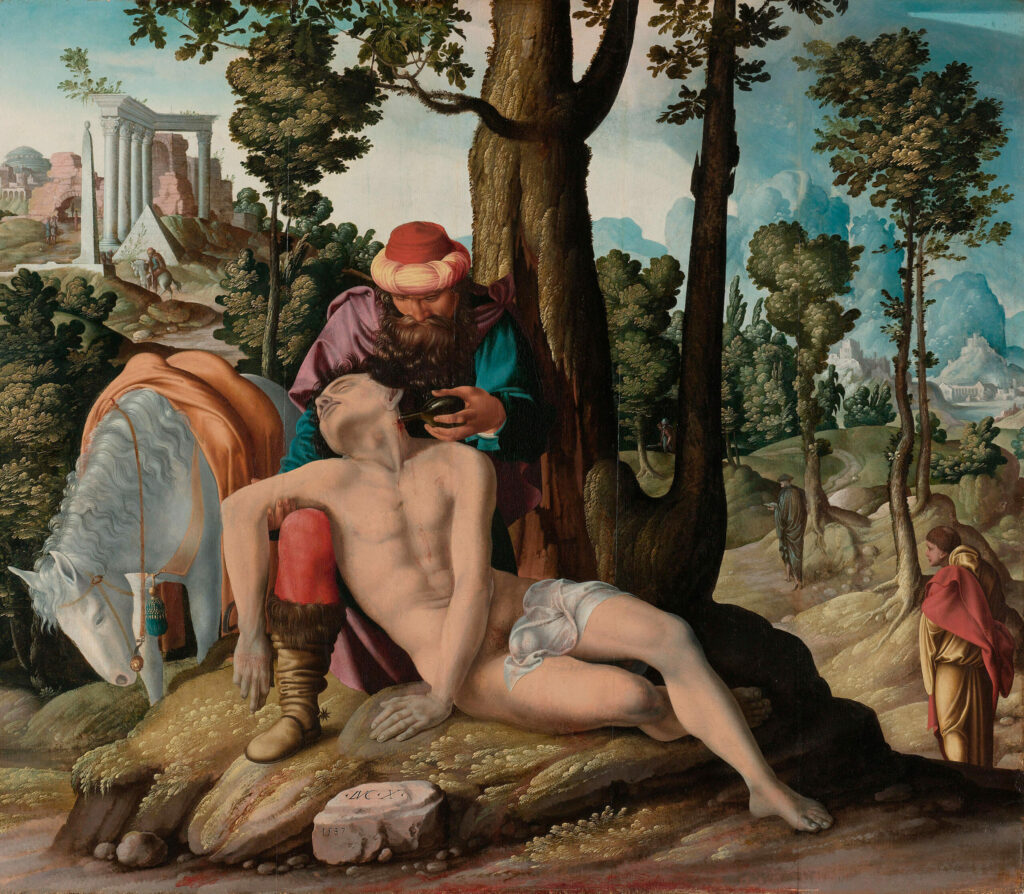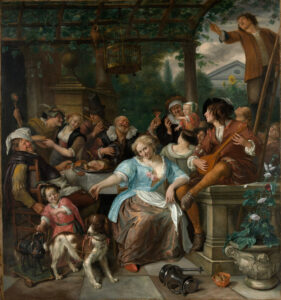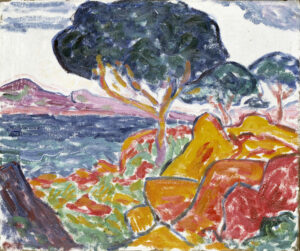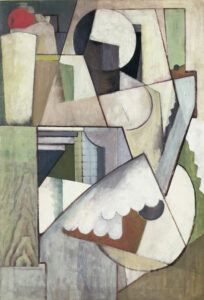
On a road between Jerusalem and Jericho, a man lies on the ground, stripped and wounded. A traveler kneels beside him. This is no ordinary passerby: it is the one despised by all, the Samaritan. The painter captures on panel this unlikely encounter, one that upends the established order.
A Theatrical Staging
The composition unfolds like a theater set. At center, beneath the dense shadow of an oak tree, the Samaritan pours oil on the wounded man’s injuries. His red turban, his purple and turquoise garments: everything signals the foreigner. The victim’s naked body contrasts with this chromatic richness. His milky pallor draws the eye. To the left, a white horse waits. To the right, a pilgrim walks away along the path. The artist masters atmospheric perspective: the Roman ruins fade into a distant blue, creating dizzying depth.
The Parable Reimagined
This oil on panel illustrates the Gospel of Luke. A man attacked by brigands is ignored by a priest and a Levite. Only the Samaritan, member of a despised people, comes to his aid. In the 16th century, this story resonates powerfully. Europe is torn apart between Catholics and Protestants. The Master of the Good Samaritan reminds us that compassion transcends religious boundaries. His landscape blends Flanders and Italy, ancient architecture and northern nature: a symbolic geography of universality.
An Anonymous Virtuoso
The Master of the Good Samaritan remains unidentified. This Netherlandish painter knew Italian art. His sculptural figures, sophisticated drapery, and use of light reveal classical training. He belongs to that generation reinventing Flemish painting.
💭 Observe the Samaritan’s hand pouring his remedy. Who, in your life, has played this role of helpful stranger?
More about this Work
- The Good Samaritan, by the Master of the Good Samaritan, 1537
- Oil on panel, 74.7 × 86 cm
- Rijksmuseum, Amsterdam
- https://id.rijksmuseum.nl/200107987






